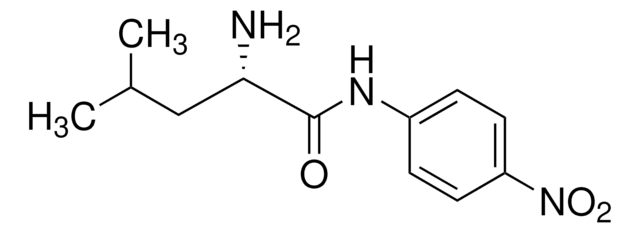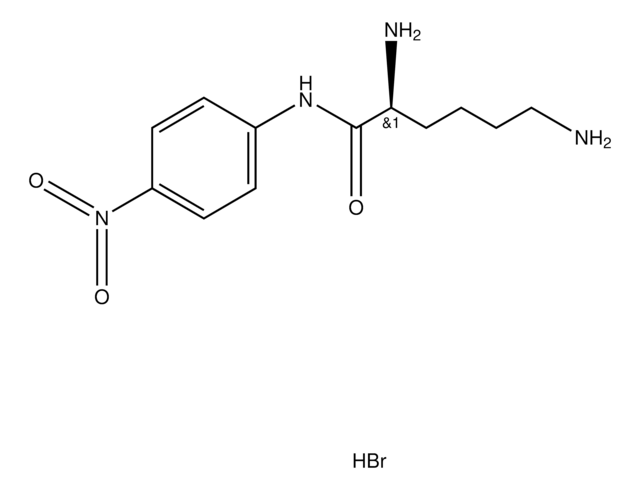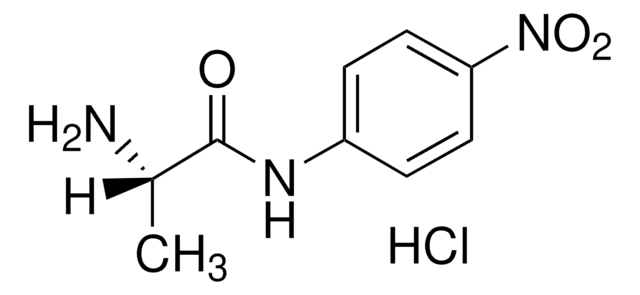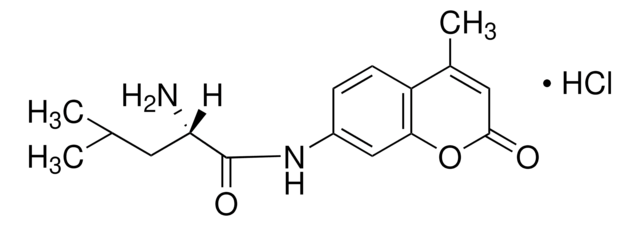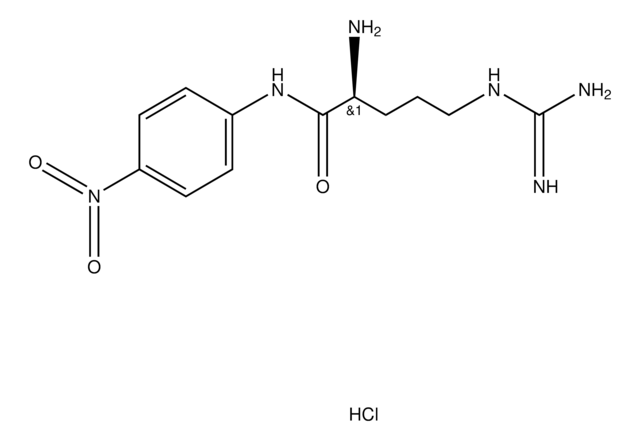L2158
L-Leucine p-nitroanilide hydrochloride
chromogenic, ≥98% (HPLC), powder
Synonym(s):
H-Leu-pNA
Sign Into View Organizational & Contract Pricing
All Photos(4)
About This Item
Empirical Formula (Hill Notation):
C12H17N3O3 · HCl
CAS Number:
Molecular Weight:
287.74
MDL number:
UNSPSC Code:
12352204
PubChem Substance ID:
NACRES:
NA.28
Recommended Products
Product Name
L-Leucine p-nitroanilide hydrochloride, ≥98% (HPLC)
Quality Level
Assay
≥98% (HPLC)
form
powder
solubility
water: 25 mg/mL
storage temp.
2-8°C
SMILES string
Cl.CC(C)C[C@H](N)C(=O)Nc1ccc(cc1)N(=O)=O
InChI
1S/C12H17N3O3.ClH/c1-8(2)7-11(13)12(16)14-9-3-5-10(6-4-9)15(17)18;/h3-6,8,11H,7,13H2,1-2H3,(H,14,16);1H/t11-;/m0./s1
InChI key
PFOYXOWPGRWPLS-MERQFXBCSA-N
Looking for similar products? Visit Product Comparison Guide
Application
L-Leucine p-nitroanilide hydrochloride has been used as a substrate to measure the activity of leucine aminopeptidase (LAP):
- for spectrophotometric assays
- in the intestinal samples, such as duodenum, jejunum, and ileum
- in the hemolymph of Manila clam
Substrates
Substrate for the colorimetric determination of leucine aminopeptidase.
Storage Class Code
11 - Combustible Solids
WGK
WGK 3
Flash Point(F)
Not applicable
Flash Point(C)
Not applicable
Personal Protective Equipment
dust mask type N95 (US), Eyeshields, Gloves
Choose from one of the most recent versions:
Already Own This Product?
Find documentation for the products that you have recently purchased in the Document Library.
Susan E Ford et al.
Fish & shellfish immunology, 23(2), 280-291 (2006-12-19)
Components of the haemolymph are understood to constitute the internal defense system of bivalve mollusks and their levels are often considered to be indicators of "health"; however, relatively little proof exists of the role that these elements play in the
J Williams et al.
British poultry science, 49(3), 329-339 (2008-06-24)
1. The objective of this experiment was to study two feeding methods, which could potentially act on the gut microflora, the structure and/or the function of the digestive tract and thereby improve the performance of broilers. 2. Four dietary treatments
Our team of scientists has experience in all areas of research including Life Science, Material Science, Chemical Synthesis, Chromatography, Analytical and many others.
Contact Technical Service